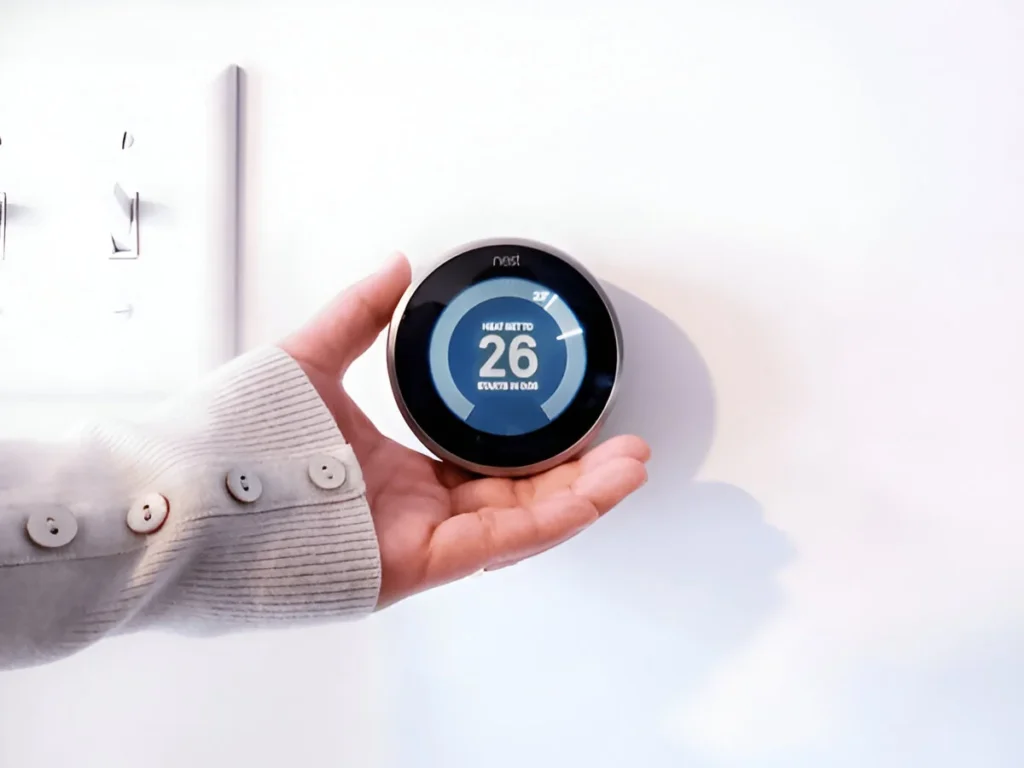-
Motilal Colony , Dumdum, Kolkata 700079
What smart sensors do for proactive threat detection
Home | Blogs | What smart sensors do for proactive threat detection

By Royals
June 28, 2025
What smart sensors do for proactive threat detection
Proactive threat detection is evolving with smart sensors. Learn how a reputed Security Guard Company integrates tech for smarter risk response.
Security in today’s world is no longer just about reacting to incidents—it’s about anticipating them before they occur. And that’s where smart sensors step in as game changers in the world of proactive threat detection.
Table of Contents
From monitoring unauthorized access in real time to identifying potential environmental hazards, smart sensors are reshaping how organizations and properties safeguard people, assets, and data.
Let’s explore what these intelligent tools do, how they work, and why they’re now essential in the modern security ecosystem.

The Shift from Reactive to Proactive Security
Traditionally, security systems focused on responding after a breach or threat had already occurred. This “reactive” model had its place—but it left little room for prevention. As threats have grown more complex and more immediate, the industry has begun transitioning to a proactive security model.
And at the heart of this transformation? Smart sensors.
What Are Smart Sensors in Security?
Smart sensors are advanced electronic devices that detect specific physical stimuli—such as motion, heat, sound, vibration, gas levels, or light—and send data to control systems for real-time analysis and decision-making.
These aren’t basic alarms or standard surveillance tools. Smart sensors are:
- Connected to the Internet of Things (IoT)
- Capable of real-time data communication
- Often enhanced with AI or machine learning
- Able to analyze behavioral patterns or environmental anomalies
The Role of Smart Sensors in Proactive Threat Detection
Here’s how these devices enhance proactive threat detection, especially in large facilities, offices, residential communities, and sensitive sites:
1. Real-Time Intrusion Alerts
- Motion sensors detect unauthorized movement in restricted zones.
- Thermal sensors recognize human body heat, even in darkness.
- Alerts are sent instantly to security teams or central control systems.
2. Environmental Hazard Detection
- Gas and smoke sensors alert early signs of fire or chemical leaks.
- Water leak sensors help prevent flooding or equipment damage.
- Helps prevent asset loss and ensures human safety.
3. Behavioral Anomaly Recognition
- AI-powered sensors can detect abnormal behavior (e.g., someone loitering too long in an area).
- Over time, they “learn” what normal looks like and flag deviations.
4. Perimeter Protection
- Vibration or seismic sensors can detect attempts to climb or cut fencing.
- Fiber optic sensors in fences sense even minor tampering.
5. Smart Access Control
- Sensors can integrate with biometric scanners to detect false access attempts.
- Systems log entry/exit data in real-time for audit trails.
Why Smart Sensors Are Essential for Modern Security
With evolving threats—be they physical, environmental, or digital—organizations can’t afford to wait until something happens. Proactive threat detection through smart sensors allows for:
- Faster response times
- Automated alerts and escalation
- Data-driven decision-making
- Prevention of damage before escalation
- Scalable coverage with minimal manpower
These capabilities are particularly valuable to teams working with or trained by experts from companies often regarded as the Best Security Guard Company In Kolkata, where a blend of tech and tactical response becomes the norm.

Types of Smart Sensors Commonly Used
Let’s take a closer look at the types of sensors often deployed in proactive security:
🔹 Motion Sensors
- Detect movement using infrared, microwave, or dual tech.
- Ideal for indoor and outdoor monitoring.
🔹 Thermal Sensors
- Use infrared to detect body heat.
- Helpful for night surveillance and fire prevention.
🔹 Acoustic Sensors
- Recognize glass breakage, gunshots, or aggressive noise levels.
- Used in banks, ATMs, and sensitive areas.
🔹 Vibration Sensors
- Triggered by physical impact or tampering.
- Protect safes, windows, and entry points.
🔹 Air Quality/Gas Sensors
- Identify chemical leaks or smoke presence early.
- Useful in labs, factories, and storage rooms.
🔹 Light Sensors
- Detect unusual changes in ambient light.
- Can activate automated lighting or cameras.
How Smart Sensors Improve Team Efficiency
When smart sensors are part of your security framework, your human team can focus better and act faster:
- Fewer false alarms – AI filters out non-threat movements (like pets or leaves)
- Predictive analytics – Systems may alert likely trouble zones based on past data
- Remote monitoring – Fewer guards needed on-site, yet visibility improves
- 24/7 operation – Machines don’t fatigue or miss cues
In effect, smart sensors empower even small teams to cover large perimeters or buildings with high accuracy and minimal delay.
Bullet Snapshot: Key Benefits of Smart Sensors in Security
🔸 Detects intrusions before entry is breached
🔸 Sends real-time alerts for fast action
🔸 Integrates seamlessly with existing CCTV and control systems
🔸 Reduces manual monitoring fatigue
🔸 Enhances accuracy of emergency response
🔸 Offers cost-effective 24/7 protection
Proactive Threat Detection in High-Risk Environments
Smart sensors are particularly effective in high-risk settings that demand constant vigilance. These include:
- Hospitals & Labs: Gas, air quality, and motion sensors help maintain safety.
- Construction Sites: Monitor access, detect vibration, prevent trespassing.
- Industrial Plants: Early detection of leaks, fires, or unusual vibrations.
- Gated Communities: Track irregular movements or perimeter tampering.
- Airports or Transit Stations: Crowd pattern analysis to flag suspicious activity.
This is proactive threat detection at its most critical—reducing the chances of catastrophic events and improving trust in the overall security ecosystem.

FAQs: Understanding Smart Sensors and Threat Detection
Q1: Are smart sensors hard to install or maintain?
A: Most modern sensors are wireless, compact, and easy to install. Many are plug-and-play with central systems.
Q2: Can smart sensors work without internet connectivity?
A: Some do. While real-time data transmission benefits from internet access, local alerts and backups work independently in many systems.
Q3: Will smart sensors replace human security guards?
A: No. They enhance guards’ effectiveness but cannot replace human intuition or physical presence.
Q4: Can smart sensors differentiate between people and animals?
A: Yes. Advanced sensors use AI to reduce false alarms by recognizing size, heat, and movement patterns.
Q5: How do I know what type of sensors I need?
A: A site audit by security professionals helps match threats to sensor types, ensuring optimal coverage.
Smarter Sensors, Safer Spaces
The future of security is intelligent, connected, and preventive—not just reactive. Proactive threat detection through smart sensors allows environments to remain alert, secure, and prepared without relying entirely on human presence.
By combining real-time data with behavioral analysis and environmental monitoring, smart sensors don’t just respond to incidents—they help prevent them entirely.
For institutions, communities, or businesses aiming for dependable and modern protection, integrating smart sensors is no longer a luxury—it’s a necessity. And with expert guidance from trusted security providers, your space can evolve into a safe, responsive, and tech-forward environment.



